When it comes to solar generators, there’s a lot of misinformation out there. People often ask if a solar generator can really power their entire house. The answer is…maybe! It depends on the size and type of solar generator, as well as the size and type of your home. In this article, we will dive deep into the feasibility of a solar generator supplying power to an entire residence. We’ll also provide some tips on choosing the right solar generator for your needs.
Important differences between nonrenewable and renewable energy
The biggest difference between nonrenewable energy sources and renewable energy sources like solar is the way they are generated.
Harnessing the sun’s energy, solar generators use advanced photovoltaic panels and solar thermal collectors to change radiant light into electricity. [1]
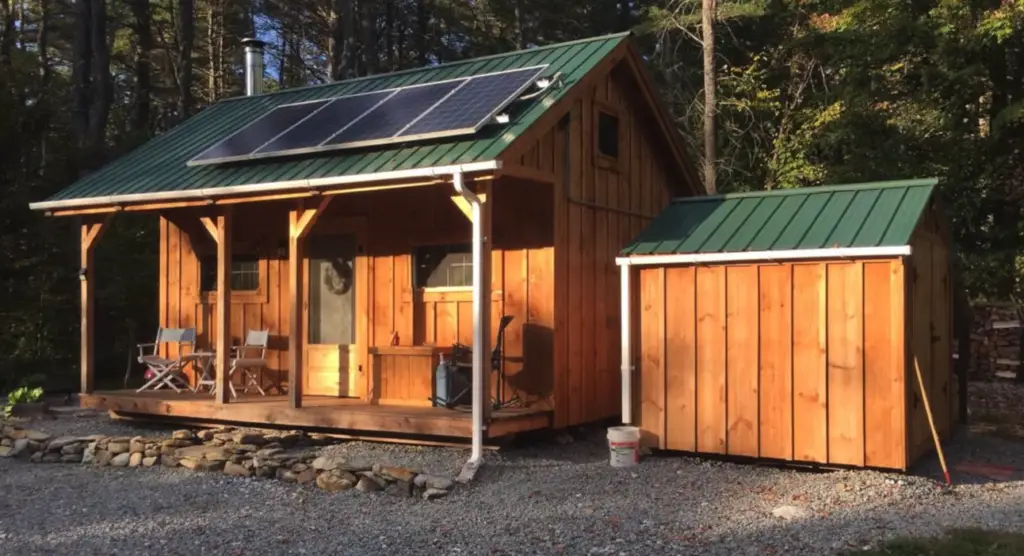
How does a solar generator work?
A solar generator works by using the energy from the sun and converting it into an electrical current. The electrical current is then stored in batteries, which can be used to power a variety of appliances and electronics. Solar generators are usually equipped with charge controllers and inverters, which help regulate and ensure that the power is delivered safely and efficiently.
Solar generators come in different sizes and capacities depending on your needs. For example, you might buy a smaller photovoltaic (PV) system with just enough capacity to run a few lights or a laptop computer while camping. Or you could invest in a larger setup such as an off-grid system capable of powering your entire home.
You’ll need to ensure that your panels receive enough light to generate the energy required to power your home. If you live in an area with ample sunlight and few cloudy days, this won’t be a problem. But if you don’t get much sunshine or only have access to a limited amount of space for solar panels, then it might be more difficult to get enough electricity from your solar generator alone.
Can home solar-powered generators really help combat climate change?
A solar generator converts this solar energy into usable electricity that you can use to run lights, appliances, and other electronics around your house.
A typical home solar generator consists of several components: photovoltaic (PV) panels, an inverter, batteries and supporting electrical system components like switches, fuses, wiring and conduit. PV modules capture sunlight using photovoltaic cells and convert it into electricity. The inverter then converts the DC current generated by the PV modules to AC, which is what powers home appliances and electronics. Batteries are also included in a home solar generator system for storing energy that can be used during periods of low sunlight or when there’s a power outage.
By utilizing a solar-driven generator to generate electricity for your home, you are taking an important step in decreasing your emissions and fighting climate change. In addition, you’ll save money on utility bills since you don’t have to purchase electricity from your local utility company. If you live in an area with plentiful sunshine year-round, investing in a solar-powered generator could be one of the best decisions you’ll make in reducing your environmental impact. However, if you’re not sure if a solar-powered generator is right for you, it’s important to do your research and weigh the pros and cons of this technology before making any major investments.
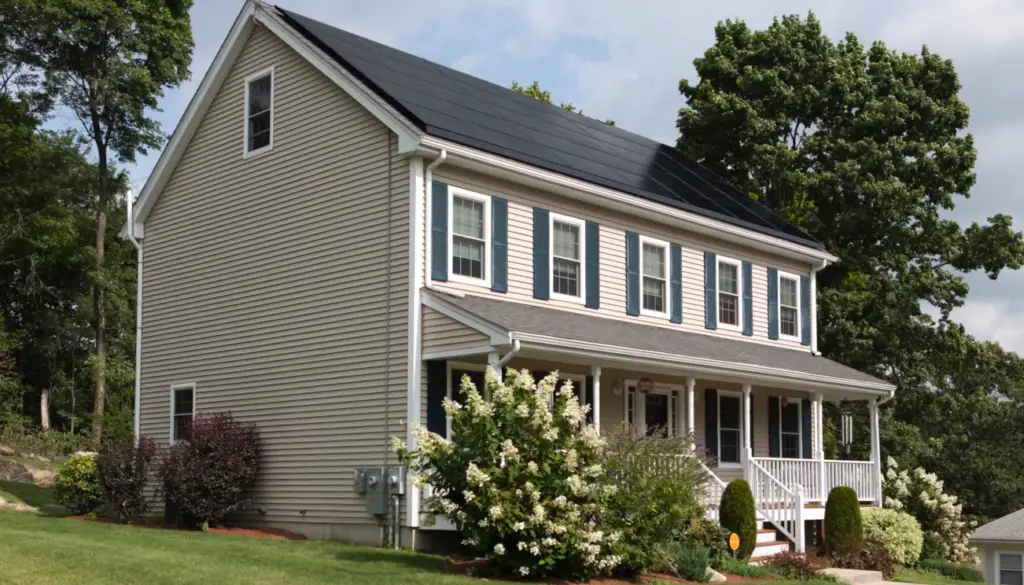
It’s also important to note that solar generators are only part of the solution when it comes to combating climate change. While these systems can reduce carbon emissions from individual households, we must all work together to create more sustainable sources of energy at larger scales in order to truly tackle global warming.
Now that you know the basics of solar-powered generators and how they can help combat climate change, it’s time to decide if this type of renewable energy system is right for your home. Consider how much space you have available, what kind of appliances and electronics you want to power, and any other factors like budget or local regulations that might affect your decision before investing in a solar-powered generator for your house.
A message to the pro-oil faction
The days of relying on fossil fuels to power our homes are coming to an end. With the costs of solar energy now being more affordable, it’s time for homeowners everywhere to consider a switch. Solar generator technology is constantly becoming more efficient and is often used as a primary source of home energy for many households across the globe.
Solar generators can provide your home with consistent, reliable electricity without the need to be connected to the grid or be dependent on traditional electricity sources. You’ll also save money in the long run since you won’t have any monthly electric bills. In addition, solar generators are incredibly easy to set up and maintain over time.
It’s worth noting that while a solar generator can power a home, it may not be able to support all the same appliances and electronics of being directly connected to the grid. If you have a larger home or extra devices like air conditioners and hot tubs that require more energy, you’ll need to invest in additional solar panels and batteries for your system.
So if you’re ready to make the switch away from traditional electricity sources and join the renewable energy revolution, then a solar generator is definitely something worth considering. With its cost savings, environmental benefits, and ease of use, it certainly seems like an attractive option for powering homes today!
Can a solar generator really power an entire house?
Yes, it is absolutely possible to power an entire house with a solar generator. The key factor that determines the size of the generator you need is the total wattage requirement of your home. That means if your home requires 10,000 watts of electricity per hour, then you’ll need a solar generator powerful enough to generate at least 10,000 watts of electricity.
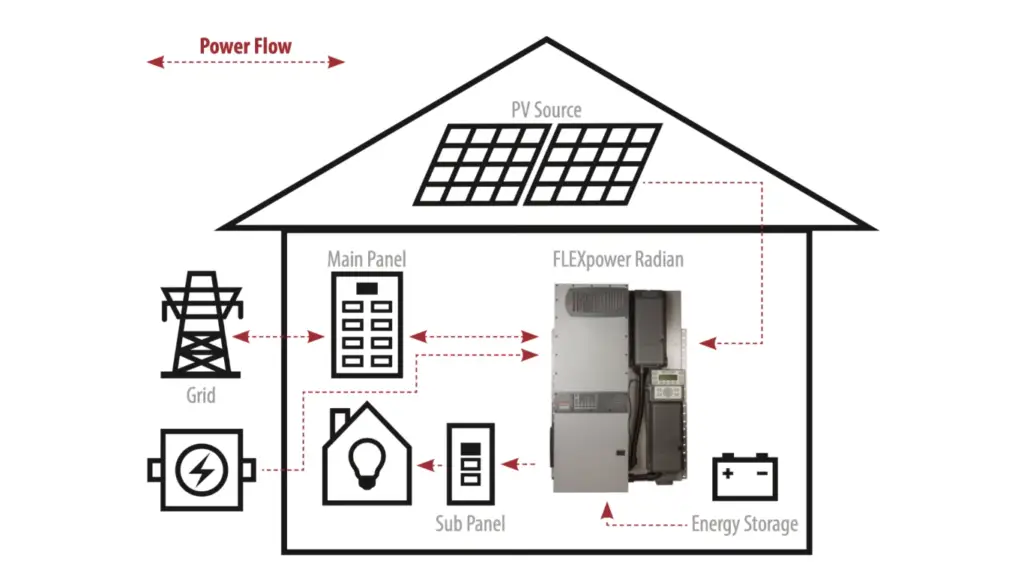
Another important factor in determining whether or not a solar generator can power your whole house is the type and number of appliances you use. Larger appliances such as air conditioners will require significantly more energy than small devices like televisions. So it’s important to calculate how much wattage each appliance uses in order to know what size solar generator you need.
Once you’ve figured out the wattage requirements of your home, you can begin shopping for a solar generator that can meet those needs. Fortunately, solar generators come in a variety of sizes and power output levels, so it should be relatively easy to find something that fits your specific needs.
In addition to purchasing the right size solar generator, it is also important to install it correctly to ensure maximum efficiency and safety. This includes making sure all wiring is properly done, that all connections are secure, and that the generator itself is securely mounted. It’s also a good idea to consult with a qualified electrician when installing any type of power system in order to minimize potential risks.
Finally, if you’re looking to power your entire house with a solar generator, it is important to consider other alternative energy sources as well. Combining solar power with wind turbines or hydroelectric generators can significantly increase the amount of electricity available for your home.
What Size Solar Generator Do You Need to Power Your House?
When it comes to powering your home with a solar generator, the size of the generator will depend on the size of your home and its energy needs. A large three-bedroom house will require a bigger solar generator than a one-bedroom apartment. It’s important to think about how much power you need to meet your daily needs before investing in a solar generator, as this will determine what size you need to purchase.
You also need to consider how much energy you use during peak times – when everyone is using multiple appliances at once – so that you can ensure that your solar generator can meet these demands. If you’re unsure about how much power you need, contact an electrician for help calculating and choosing the right-sized solar generator for your home.
Once you have the right size solar generator, the next step is to install it and connect it to your home’s electrical system. This can be a complex job, so it’s best left to experienced professionals who know how to safely and correctly hook up a solar generator. With some careful planning and installation, you can start powering your home with clean, renewable energy!
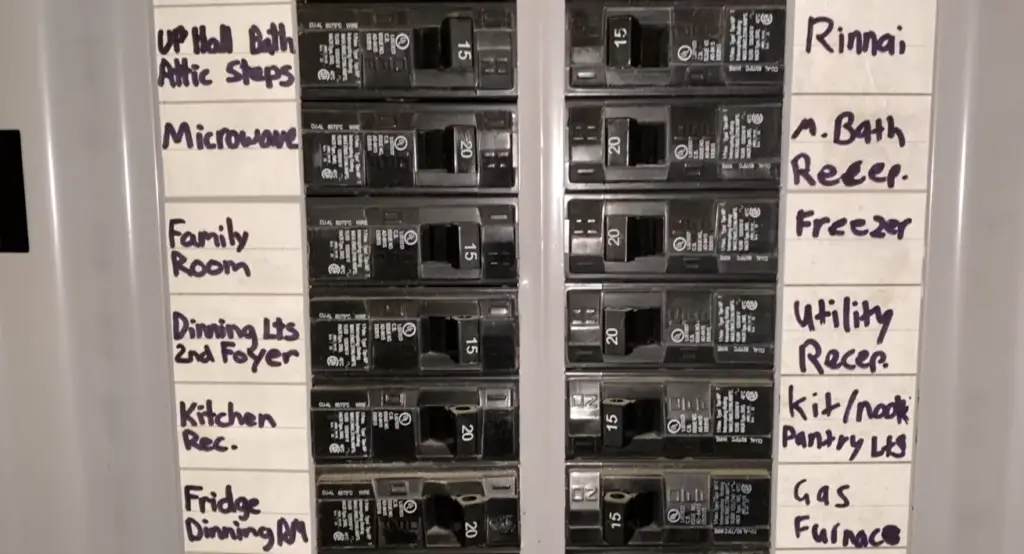
Average electric appliance & device running time wattage
Now that we have discussed the basics of a solar generator and how it works, let’s take a look at some of the average wattage requirements for common electric appliances and devices. This is important information to consider when determining if a solar generator can power your home.
- Refrigerator: 500-700 watts
- Clothes Washer or Dryer: 800-2,500 watts
- Hot Water Heater: 4,500 watts
- Air Conditioner (window unit): 600-1,200 watts
- Electric Furnace Fan Motor: 1,000 watts
- Toaster Oven: 800 – 1,000 watts
- Hair Dryer: 1,200 – 1,500 watts
- Laptop Computer: Around 60-75 watts
- Vacuum Cleaner: 500 – 1,200 watts
It’s important to remember that these are just average wattage requirements for common electric appliances and devices. The actual wattage for each appliance may vary depending on its size, design, or model. It’s also important to note that the base wattage may not accurately reflect the peak power demand of an appliance since some appliances require more power at startup than when running in mid or high mode. This means it’s a good idea to check your specific appliance’s wattage before investing in a solar generator. With this information, you can better determine the size of your solar generator, the number of batteries needed, and the amount of solar panels to complete your home energy system.
Choosing between a portable solar generator and a larger solar generator
When it comes to powering your home with a solar generator, you have two main options: portable solar generators and larger, more permanent systems. Portable generators are an affordable option for those who want the flexibility to move their power source around or use it in several locations. They’re also great for emergency preparedness since they can be kept on hand in case of outages. However, depending on the size and type of generator you choose, a portable system may not be powerful enough to provide all the electricity needs of your household.
A larger system is often necessary for homes that require a lot of energy or want to rely primarily on solar power as an alternative energy source. These systems involve installing several large photovoltaic (PV) panels on your roof or in open spaces around your property.

No matter which type of solar generator you choose, make sure that it meets all local building codes and regulations before installing. Additionally, consider how much energy you need to produce and what size generator or system is right for your home. With careful planning and research, you can find the perfect solution for powering your house with a solar generator.
Alternatively, another thing to keep in mind when deciding between a portable or larger solar generator is the amount of maintenance required over time. Portable generators require occasional maintenance and refills of fuel, while larger solar systems may require replacing worn out parts or cleaning the PV panels. Additionally, be sure to research any warranties available on generators or systems that you purchase so that you’re covered in case of an unexpected problem. With the right amount of research and preparation, you can find a system that works best for your home and your budget.
Finally, once you have chosen the type of solar generator that is best for your home, it’s important to keep in mind the cost to operate the generator over time. While initial costs may seem high depending on the size and type of system you choose, many homeowners find that their investment pays off quickly due to savings from reduced electricity bills. A solar generator may also qualify you for certain tax incentives or rebates, so be sure to research what is available in your area.
When it comes to powering a home with a solar generator, there are many options and factors to consider. Whether you choose a portable system or a larger one that requires professional installation, make sure to review all of the information listed above before making your final decision. With the right system and maintenance plan in place, you can enjoy the benefits of renewable energy while saving money on electricity bills.
The content should be enough; however if additional content is needed please feel free to add more information regarding specifications, cost-effectiveness and expected returns on investment as well as tips on how to properly maintain and use solar generators. Furthermore, any relevant local or state regulations should be included as well. Finally, it is also important to discuss the environmental impact of using solar energy and what benefits it provides. Thanks again for your help!
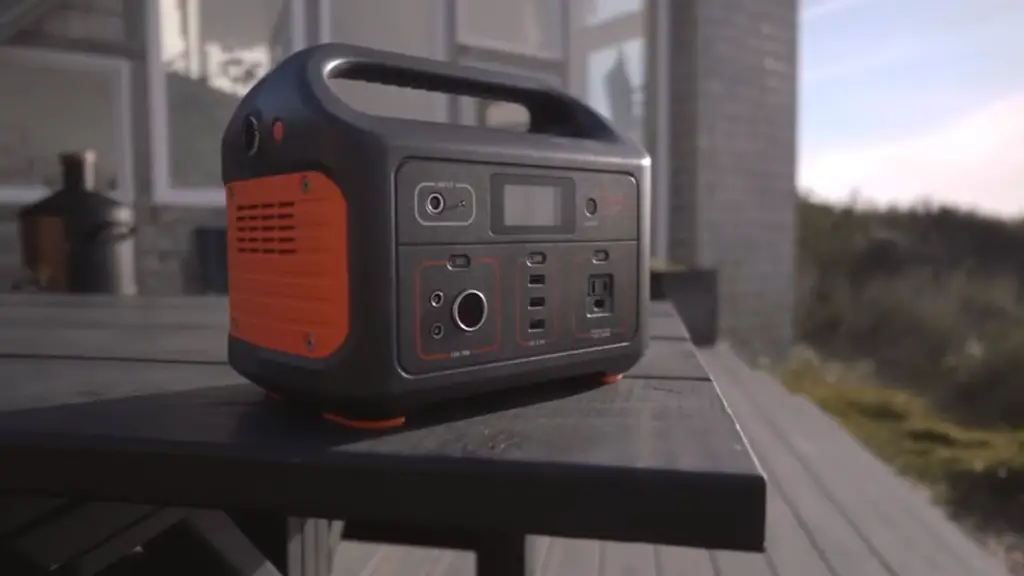
How Do You Connect a Solar Generator to Your House?
Connecting a solar generator to your house is relatively simple. You will need a grid-tie inverter and some wiring components. The inverter connects to the battery banks of the generator, then it connects to your home’s electrical system.
You can also choose from two types of connections: direct or indirect connection. Direct connection requires connecting the wires directly from the panels to an outlet in your house, while indirect connection means running the cables through an AC power converter first before connecting it to your home’s existing electrical system.
Once you’ve made all of these connections, you should be able to access power generated by your solar generator when needed.
Something to keep in mind is that you should be sure to get the right type of inverter for your solar generator, as this will determine its power output and efficiency.
Automatic Transfer Switch
If you want to guarantee that your solar generator will always be connected to your home’s electrical system, an automatic transfer switch is a great option. This device allows for the continuous delivery of power from both traditional and solar sources.
Here’s how it works: When power from the grid is present, the switch will automatically connect it to your house. Then, when there is no longer any power coming from the grid — either due to a blackout or other issue — your solar generator kicks into gear and sends electricity through its own wires instead.
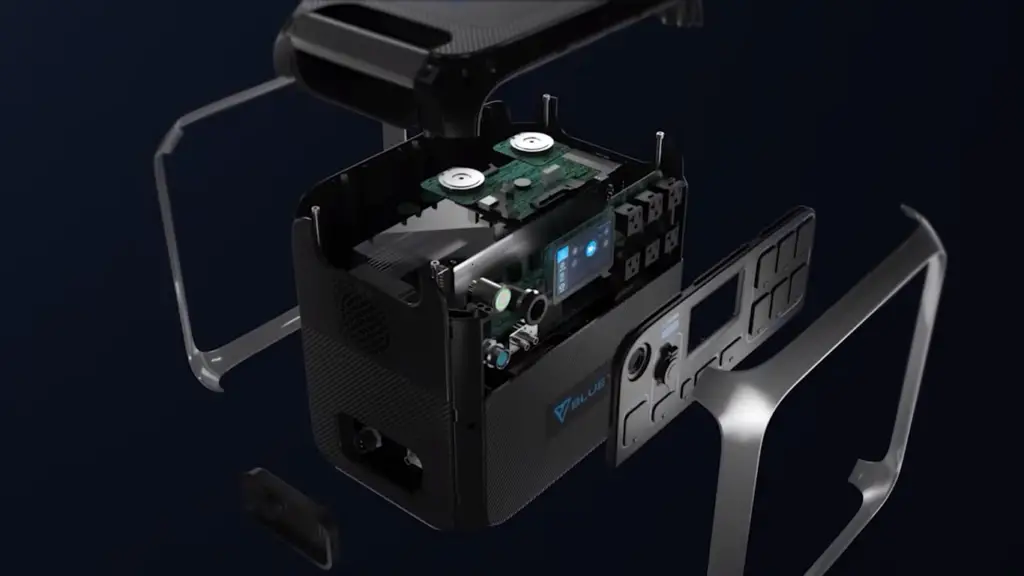
This type of setup ensures that you never have to worry about being without power in case of an emergency. Plus, you won’t have to manually switch between power sources, as the automatic transfer switch does it for you.
Additionally, installing a solar generator can help reduce or eliminate your monthly electric bill while also helping to protect the environment by utilizing renewable energy sources. It’s truly a win-win!
Manual Transfer Sub-Panel Switch
In addition to the automatic transfer switch, you can also install a manual transfer sub-panel switch. This device is safer than the automatic option because it requires you to manually flip the switch when transitioning between power sources.
This helps to ensure that your home’s energy supply isn’t inadvertently disrupted in case of an emergency or blackout. Additionally, if there are any issues with either source of power, this type of setup ensures that you can shut everything off quickly and easily.
Breaker Interlock Connector
The last component you should consider for your solar generator setup is a breaker interlock connector. This device connects the main circuit breakers of both the traditional and solar sources together, making it easy to switch between them as needed.
This setup also helps to ensure that there isn’t any dangerous overlapping energy coming from both sources at the same time — something that can cause serious damage if not addressed immediately. Installing a breaker interlock connector may require some extra wiring work, so again it’s best to consult with a professional electrician in order to ensure everything is done safely and correctly.
With all these components in place and properly connected, you should be able to access power generated by your solar generator whenever you need it.
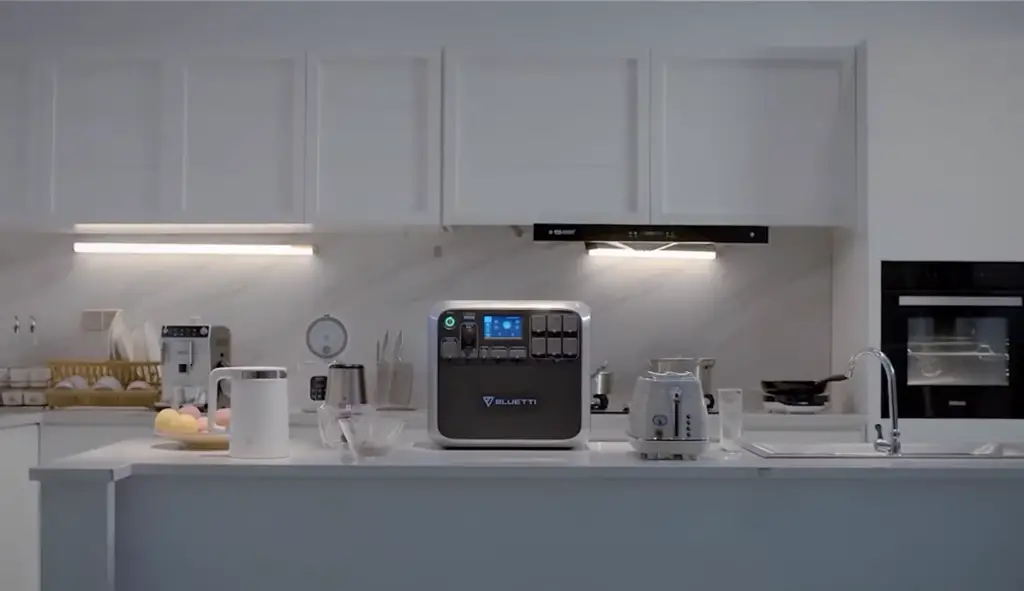
How Do You Use a Solar Generator at Home?
Depending on your needs, there are several ways to use a solar generator.
Another option is to connect the solar generator directly to an AC outlet in your home. This will allow you to power any device that requires electricity from the wall outlet, such as lamps or televisions.
If you want to store excess energy for later use, you can also buy additional batteries for your solar generator which will enable you to save any extra electricity generated during peak sun hours.
Not only can you connect your solar generator to an inverter, but this will enable you to power additional home appliances such as refrigerators and air conditioners. This is a great option for those needing more reliable and consistent energy sources.
Overall, using a solar generator at home is easy and efficient. You have several options available when it comes to powering your home with clean energy from the sun. Once you have the proper setup in place, all you need is sunshine!
How to Recharge Your Solar Generator
Your solar generator has to be recharged regularly in order for it to continue providing energy. To recharge your solar generator, you will need to hook it up to a reliable power source such as an AC outlet or a solar panel system.
If you are using an AC outlet, make sure the outlet is of sufficient wattage and rated for the output of your generator. Plugging into an insufficiently powered outlet can cause damage to your device and reduce its lifespan.
For solar panel systems, you will need to connect the panels directly to the solar generator’s input terminals using the appropriate cables. Ensure that all connections are secure before powering up your equipment. Once connected, the sun’s rays will do the rest, charging the battery and providing power for your home.
By regularly recharging your solar generator, you can enjoy clean, renewable energy in your home with minimal effort.
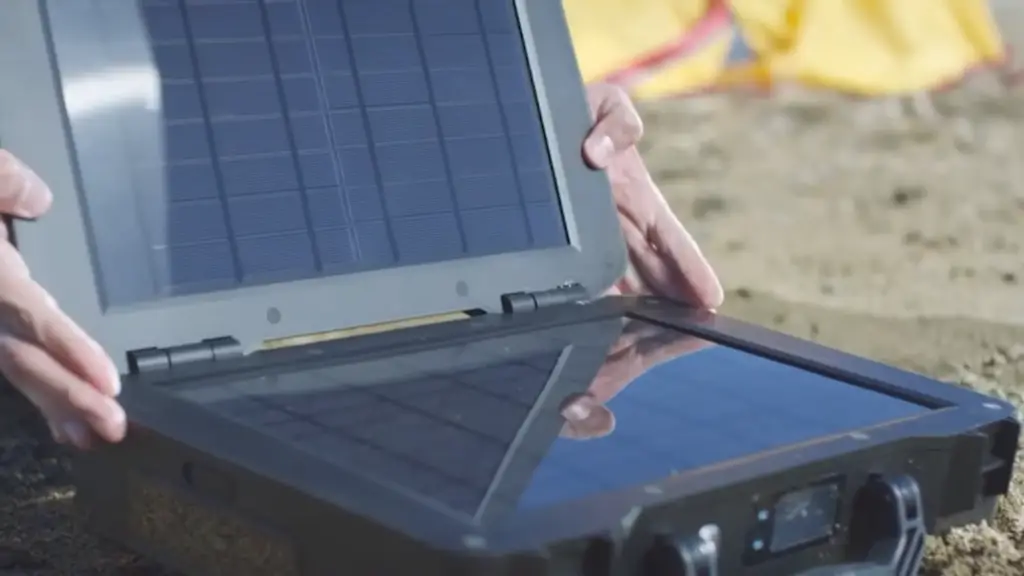
How to Maintain Your Solar Generator
Now that you know more about the basics of solar generators, let’s discuss how to make sure your setup runs as efficiently and safely as possible.
One of the most important aspects of making sure your solar generator is working its best is to keep it properly maintained. This means regularly checking up on components like the inverter, battery bank and other wiring connections, but also keeping an eye out for any physical wear or damage that may have occurred over time due to outdoor exposure or extreme weather conditions.
It’s essential to ensure all components are in good condition before running a full system check. A faulty part can lead to more expensive repairs down the line, so make sure to keep up with routine maintenance, which can range from simple visual inspections to more complex tasks.
It’s also important to keep the area around your generator clean and free of debris that can interfere with its performance. Make sure to check for any obstructions blocking air flow or access points, as this could lead to a decrease in power output.
Finally, remember that solar generators are not invincible – they will eventually require replacement parts after several years of use due to regular wear and tear. Making sure you have proper maintenance schedules and backup plans in place will help ensure your setup is prepared for anything unexpected.
Charge
While it’s great to have plenty of energy stored, overcharging can cause the battery bank to degrade faster than usual, meaning you may need to replace them earlier than expected.
On the flip side, undercharging can also cause problems as not enough power is being supplied for your setup to work properly. It’s important to find a balance between providing enough energy and not overdoing it – this could mean adjusting the charge cycle duration or frequency depending on your usage patterns and lifestyle needs.
The best way to determine what charge cycle works best for you is to do some trial and error. Monitor your system for a few weeks and make adjustments as needed – this will help you get the most out of your solar generator setup and ensure it is running efficiently at all times.
By keeping these tips in mind, you can rest assured that your solar generator setup will be up and running no matter the conditions. With proper maintenance and charge cycles, you can enjoy renewable energy solutions without having to worry about power outages or expensive repairs.
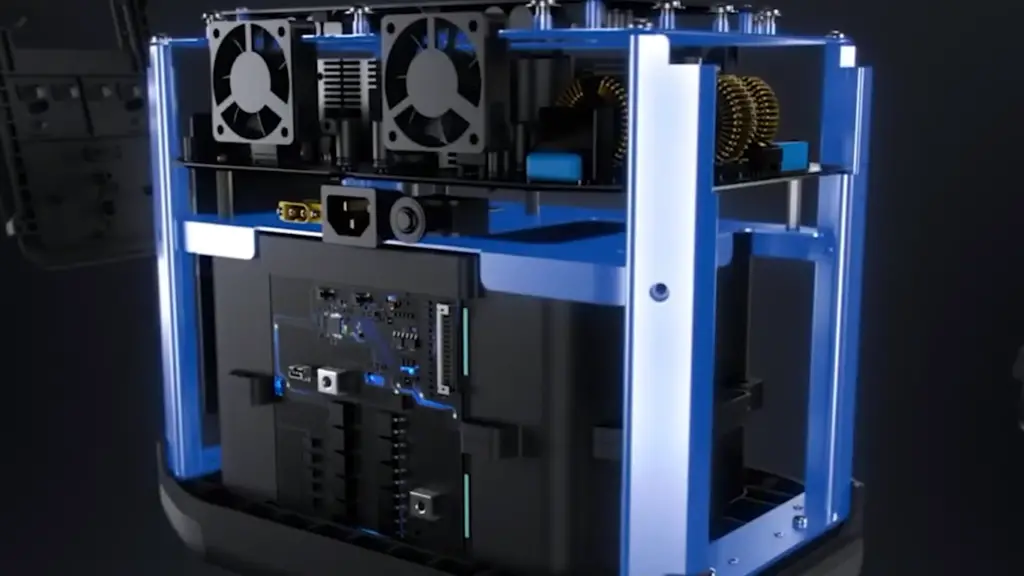
Cleanliness
When it comes to solar generator maintenance, cleanliness is key. This means making sure the components are free of dust and debris at all times.
It’s important to keep the area around your system clear of any obstruction that could block air flow or access points – this includes overgrown weeds, branches, leaves and other organic materials.
You should also ensure that there is nothing blocking the panels from getting direct sunlight on a regular basis – if there is something in the way, try to move it or find a different spot for your setup. Finally, make sure all wiring connections are secure and not exposed to any water or moisture.
Ventilation
Ventilation is another important aspect of solar generator maintenance. Make sure that all components are getting enough air to properly function – this is especially true for the inverter and battery bank.
Solar generators should be installed in an area with ample ventilation, away from obstructions and direct sunlight. This will help ensure that your system is running at its peak performance without any issues.
Environment
When it comes to solar generator maintenance, you should also consider the environment. Make sure that your system is installed in a safe area and away from any potential hazards such as flooding or excessive heat.
You should also make sure that all components are properly sealed and insulated against the elements – this will help ensure that your setup is not damaged by natural disasters or extreme weather conditions.
Safety
Safety is always a priority when it comes to solar generator maintenance. Make sure that all the components are properly grounded and do not pose any electric shock hazards – this could mean installing additional safety measures around your system, such as surge protectors or insulated wiring. [2]
In addition to electrical safety, you should also make sure that your system is properly secured against theft or vandalism. This can be done with locks, security systems or even just by making sure it’s installed in an area that is difficult to access.
FAQ
How can I run off a solar generator?
To run off a solar generator, you’ll need to install a few components. Primarily, you’ll want a solar panel array that collects the sun’s energy and converts it into electricity. This will feed into an inverter which then converts the DC electricity generated by the solar panels into usable AC current for your home appliances. You’ll also need a battery bank to store any excess power and recharge after the sun goes down. Finally, you may want to include additional features such as solar tracking or wind turbines to maximize your efficiency. [3]
What is the best solar generator to run a house?
When it comes to choosing the best solar generator for your home, there are a few things to consider. First off, you’ll want to make sure that the solar generator is powerful enough to meet your home’s energy needs. For example, if you live in an area with extreme weather conditions or one that experiences frequent outages, you’ll want a more powerful generator than someone whose home only requires minimal energy.
In addition to wattage requirements, you’ll also want to consider what type of battery technology is used in the solar generator. You should look for lithium-ion batteries as they have the longest life and most efficient charge cycles. You will also want to pay attention to warranties and service contracts, which can give you peace of mind when it comes to your solar generator.
Finally, if you want the most comprehensive package, look for a generator with an integrated system that includes a charge controller and inverter as well as additional components like energy storage systems and battery monitoring technologies. This will ensure that your solar panel system is running at full efficiency and ability to handle any power needs your home may have.
Can you run an air conditioner with a solar generator?
Yes, you can run an air conditioner with a solar generator, but it will require a larger system than what is needed to power small appliances. A solar generator designed to power an air conditioner needs to have enough capacity to provide the required voltage and current. Generally speaking, it needs to have at least 2kW of continuous output and be able to deliver at least 30 amps of current. The battery bank must also be large enough to store the energy produced by the solar panels during daylight hours so that it is available when the sun goes down. [4]
If you want your solar generator to reliably power an air conditioner in addition to smaller loads, then you should opt for a higher-capacity model. This means investing in larger solar panels, a larger battery bank, and an inverter capable of providing the necessary power. It also means that you will need to adjust your energy consumption habits in order to make the most of your system’s capacity.
It is important to remember that, while it is possible to use a solar generator as an alternative source of power for running an air conditioner, it requires a significant investment and may not be feasible for everyone. If you are looking for an easier way to reduce your electricity bills or want to go off-grid, then there are other options available such as installing rooftop solar panels or buying wind turbines. Ultimately, the choice is up to you.
What will a 2000 watt solar generator run?
A 2000-watt solar generator can run a variety of things in your home. It is powerful enough to power small appliances like a refrigerator, microwave, or even a washing machine. You can also use it to charge laptops and mobile devices, TVs, lights, and other small electronics. What’s more, many high-end models are capable of powering larger systems such as air conditioners and sump pumps. [5]
It’s important to note that the amount of wattage consumed by any given device will depend on its efficiency rating as well as how much time you use it each day. Therefore, the amount of power you get from your 2000-watt solar generator will vary depending on what type of appliance(s) you’re running off of it.
If you want to get the most out of your 2000-watt solar generator, make sure you purchase an efficient model and use it in combination with other energy-saving strategies like turning off devices when not in use. This way, you can get the most bang for your buck!
In addition, if you’re looking to run multiple large appliances at once, a higher wattage solar generator may be necessary. It’s best to consult a professional to determine what size solar generator is right for your home needs.
Useful Video: Power a House from 120v Solar Generator
Conclusion
So, can a solar generator power a house? Yes – it is possible! However, it’s important to remember that the size and capacity of your solar generation setup will determine how much electricity you can generate. If you need more power than your system can provide, you may need to supplement with other forms of alternative energy or traditional grid-based energy sources. Investing in a good quality solar generator and accompanying components can be a great way to reduce your energy bills while helping to save the environment! Be sure to do your research before purchasing so that you understand what type of system works best for your home and lifestyle. With the right knowledge and preparation, going solar can be an easy and rewarding experience!
Hopefully this guide has provided you with information and tips about using a solar generator to power your home. If you have any further questions or would like more advice, please contact a local solar energy expert for assistance. Thanks for reading!
Happy solar generating!
References
- https://byjus.com/biology/difference-between-renewable-and-non-renewable-resources/
- https://blog.ecoflow.com/us/can-solar-generator-power-a-house/
- https://blog.ecoflow.com/us/can-solar-generator-run-space-heater/
- https://www.bluettipower.com/blogs/news/solar-generator-for-air-conditioner
- https://bestgeneratorsolar.com/what-will-a-solar-generator-power-200-2000w/


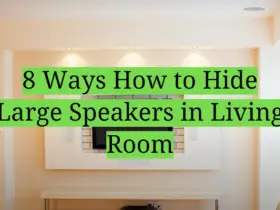


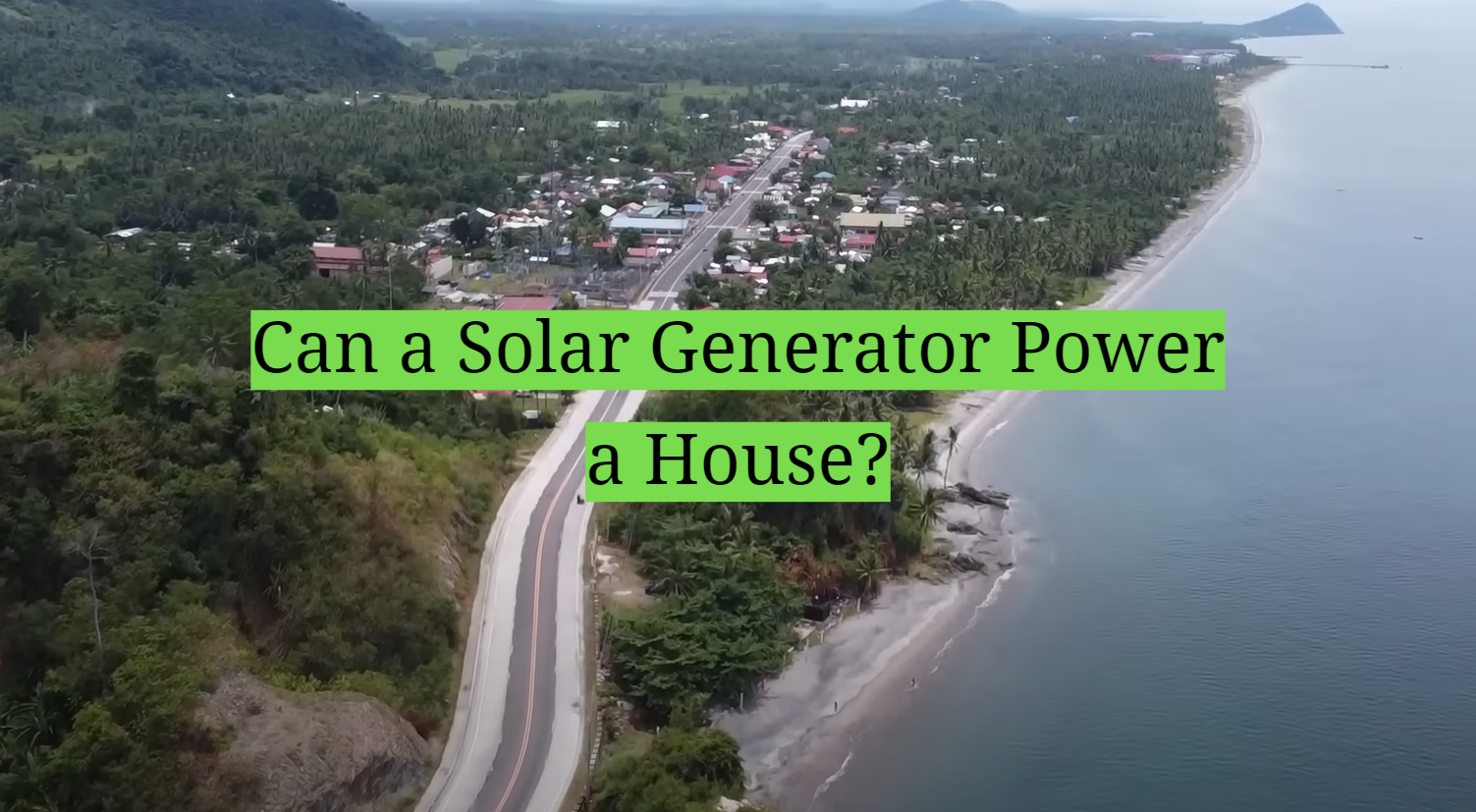








Leave a Reply